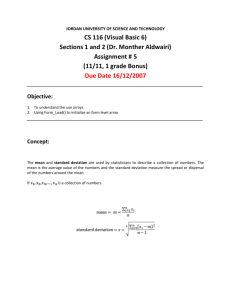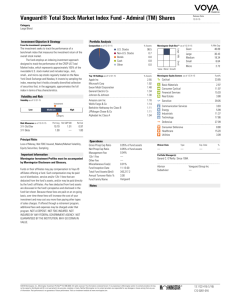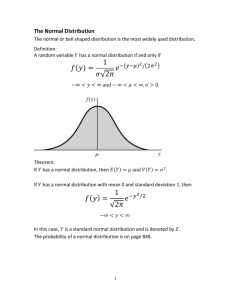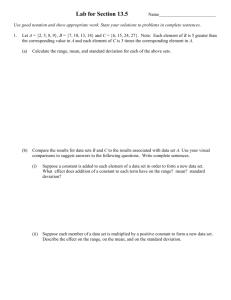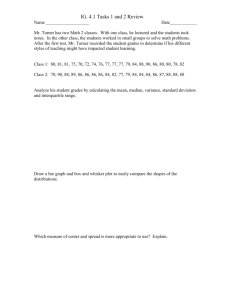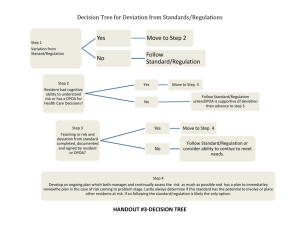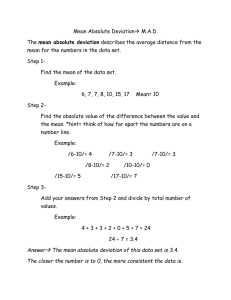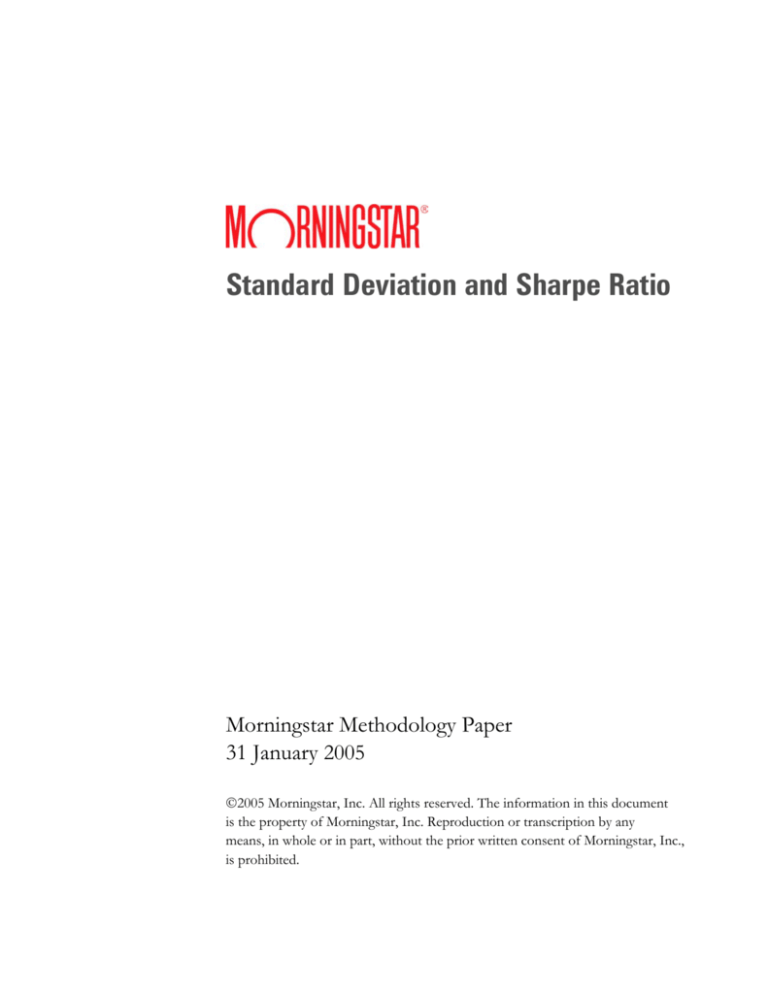
Standard Deviation and Sharpe Ratio
Morningstar Methodology Paper
31 January 2005
2005 Morningstar, Inc. All rights reserved. The information in this document
is the property of Morningstar, Inc. Reproduction or transcription by any
means, in whole or in part, without the prior written consent of Morningstar, Inc.,
is prohibited.
Standard Deviation
Standard deviation is the statistical measurement of dispersion about an average,
which depicts how widely a stock or portfolio’s returns varied over a certain period
of time. Investors use the standard deviation of historical performance to try to
predict the range of returns that is most likely for a given investment. When an
investment has a high standard deviation, the predicted range of performance is
wide, implying greater volatility.
If an investment’s returns follow a normal distribution, then approximately 68
percent of the time they will fall within one standard deviation of the mean return of
the investment, and 95 percent of the time within two standard deviations. For
example, for a portfolio with a mean annual return of 10 percent and a standard
deviation of two percent, you would expect the return to be between eight and 12
percent about 68 percent of the time, and between six and 14 percent about 95
percent of the time.
In this context, the mean annual return is based on an arithmetic average (sum/n) of
the monthly returns of the investment (an average, which is then annualized). This is
slightly different than the total return of the investment, because the total return is a
geometric average of the monthly returns, calculated as [(1+r1)(1+r2)…(1+rn)]-1.
Morningstar calculates standard deviation for stocks, open-end mutual funds,
closed-end funds, exchange-traded funds, indexes, separate accounts, variable
annuity underlying funds, and variable annuity sub-accounts. Morningstar uses the
historical monthly total returns for the appropriate time period (one-, three-, five-,
10-, 15-, and 20-year) to calculate the monthly standard deviation. The monthly
standard deviation is then annualized to put it into a more useful one-year context.
Morningstar Methodology: Standard Deviation and Sharpe Ratio| 31 January 2005
© 2005 Morningstar, Inc. All rights reserved. The information in this document is the property of Morningstar, Inc. Reproduction or transcription by any means,
in whole or part, without the prior written consent of Morningstar, Inc., is prohibited.
2
Morningstar uses the sample standard deviation method1. The monthly standard
deviation is
σM =
1 n
(Ri − R )2
∑
n − 1 i =1
where
σM
=
Monthly standard deviation
n
=
Number of periods
Ri
R
=
Return of the investment in month i
=
Average monthly total return for the investment
R is also called the arithmetic mean, and it is calculated by adding together all the
monthly returns for the portfolio and dividing by the number of months.
R=
1 n
∑ Ri
n i =1
Morningstar annualizes the monthly standard deviation to put the number in more
useful one-year terms by multiplying it by the square root of 12.2
σ A = σ M 12
Morningstar tools and websites most commonly display the annualized version of
the three-year standard deviation.
1
This corresponds to the Microsoft Excel function “stdev.”
2
Prior to 2/28/2005, Morningstar calculated standard deviation with the population method (divide by n instead of n-1,
“stdevp” in Microsoft Excel). Also, prior to this date, Morningstar annualized standard deviation with a method
developed by James Tobin. σA=([(σM)2 + (1+avgR)2]12 – [(1+avgR)2]12)1/2
Morningstar Methodology: Standard Deviation and Sharpe Ratio| 31 January 2005
© 2005 Morningstar, Inc. All rights reserved. The information in this document is the property of Morningstar, Inc. Reproduction or transcription by any means,
in whole or part, without the prior written consent of Morningstar, Inc., is prohibited.
3
Sharpe Ratio
The Sharpe Ratio is a risk-adjusted measure developed by Nobel Laureate William
Sharpe. It is calculated by using excess return and standard deviation to determine
reward per unit of risk. The higher the Sharpe Ratio, the better the portfolio’s
historical risk-adjusted performance. Morningstar calculates the Sharpe Ratio for
portfolios for one, three, five, and 10 years. Morningstar does not calculate this
statistic for individual stocks. The monthly Sharpe Ratio is as follows:
Re
Sharpe RatioM =
σ Me
The numerator, R e , is the average monthly excess return:
Re =
where
Re
1 n
∑ ( Ri − RFi )
n i =1
=
Average monthly excess return of the portfolio
Ri
RFi
=
Return of the portfolio in month i
=
Return of the risk-free benchmark in month i3
n
=
Number of months
The denominator, σ Me , is a monthly measure of the standard deviation of excess
returns. Because this measures the standard deviation of the spread between the
portfolio and the risk-free rate, it is slightly different than the standard deviation of
total returns displayed in most Morningstar products. The denominator is:
(
)
2
1 n
Ri − RFi − R e
∑
n − 1 n =1
The annualized Sharpe Ratio is the product of the monthly Sharpe Ratio and the
square root of twelve. This is equivalent to multiplying the numerator by 12 (to
produce an arithmetic annualized excess return) and the denominator by the square
root of 12 (annualized standard deviation).4
σ Me =
Sharpe RatioA = Sharpe RatioM 12
3
Morningstar chooses a risk-free benchmark based on the portfolio’s domicile, e.g. the 3-month Treasury bill for
portfolios based in the United States.
4
Prior to 2/28/2005, Morningstar annualized the Sharpe Ratio with a method developed by James Tobin.
Morningstar Methodology: Standard Deviation and Sharpe Ratio| 31 January 2005
© 2005 Morningstar, Inc. All rights reserved. The information in this document is the property of Morningstar, Inc. Reproduction or transcription by any means,
in whole or part, without the prior written consent of Morningstar, Inc., is prohibited.
4

